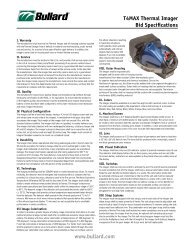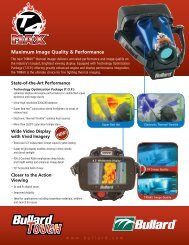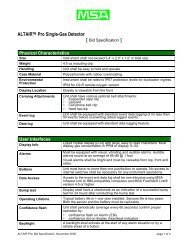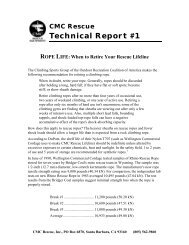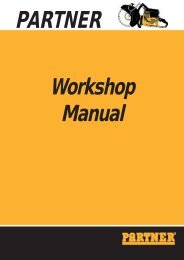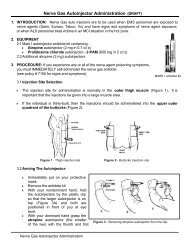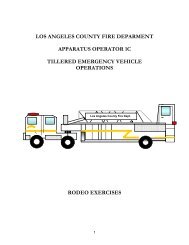PARTNER K950 Operators Manual 1998.pdf
PARTNER K950 Operators Manual 1998.pdf
PARTNER K950 Operators Manual 1998.pdf
You also want an ePaper? Increase the reach of your titles
YUMPU automatically turns print PDFs into web optimized ePapers that Google loves.
CUTTING BLADES<br />
SAFETY INSTRUCTIONS<br />
Abrasive blades<br />
The cutting material in an abrasive blade consists of abrasive<br />
corn that is held together by an organic bonding agent.<br />
”Reinforced blades” are made up of a fabric or fibre base that<br />
prevents total breakage at maximum working speed if the blade<br />
should be cracked or damaged. (The term reinforced does not<br />
refer to those cutting blades that are only reinforced around the<br />
flange).<br />
A cutting blade’s performance is determined by the type and<br />
size of abrasive corn, and the type and hardness of the bonding<br />
agent.<br />
Characteristics that give the blade a shorter service life and<br />
greater cutting capacity are said to make the blade ”softer”. A<br />
blade with a longer service life and slower cutting capacity is a<br />
blade with a ”harder” effect.<br />
General<br />
Cutting blades are available in two standard designs; abrasive<br />
blades and diamond blades.<br />
High quality cutting blades are normally more economical.<br />
Lower quality cutting blades usually have an inferior cutting<br />
capacity and shorter service life, which results in higher cost per<br />
processed material.<br />
ABRASIVE BLADES, TYPES AND USES<br />
!<br />
WARNING!<br />
A cutting blade may burst and cause injury<br />
to the operator.<br />
Blade<br />
type<br />
General<br />
characteristics<br />
Use<br />
Material<br />
Water cooling<br />
High speed portable tools<br />
Cutting blades of the make Partner are manufactured for<br />
portable, high speed, power cutters. If other makes of cutting<br />
blades are used, ensure the blades comply with all the<br />
directives and requirements attributed to the specific type of<br />
power cutter.<br />
!<br />
WARNING!<br />
Never exceed the maximum working speed of<br />
a cutting blade.<br />
Special blades<br />
Some cutting blades are designed for stationary equipment and<br />
for use with attachments. These types of cutting blades must<br />
not be used on portable, power cutters.<br />
Concrete<br />
Metal<br />
Universal<br />
usage,<br />
economical<br />
Unbeatable for<br />
steel (not<br />
suitable for<br />
concrete, etc.)<br />
Concrete,<br />
asphalt,<br />
stone,<br />
brickwork,<br />
cast iron,<br />
aluminium,<br />
copper,<br />
brass, cables,<br />
rubber, etc.<br />
Steel, steel<br />
alloys and<br />
other hard<br />
metals.<br />
Increases the<br />
blade’s service<br />
life. Reduces<br />
dust formation.<br />
Recommended.<br />
Reduces cutting<br />
capacity NOT<br />
recommended.<br />
!<br />
WARNING!<br />
Never use a cutting blade for any other<br />
purpose than that it was intended for.<br />
Always contact local authorities and make sure you are<br />
following applicable directives.<br />
10 – English




